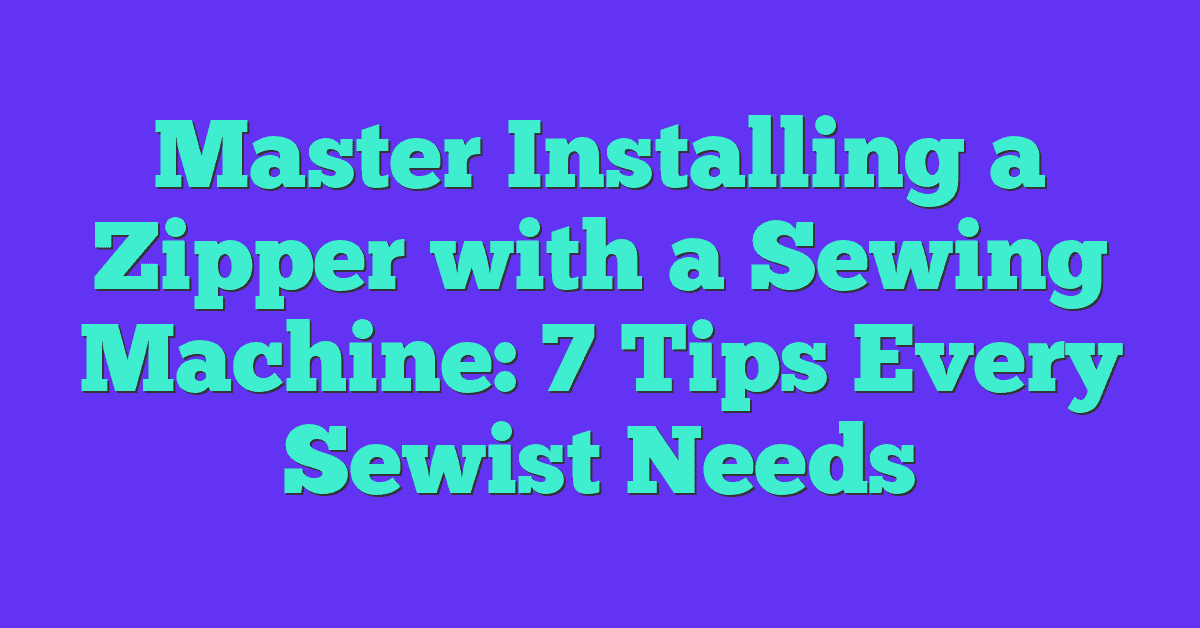I’ve always loved giving my sewing projects that extra bit of polish, and a double needle hem does just that. It’s a simple technique that can elevate your garments and home decor pieces.
Whether you’re a beginner or have some sewing experience, mastering the double needle hem is easier than you might think. In this guide, I’ll walk you through the steps to achieve professional-looking hems every time.
Understanding the Double Needle Hem
A double needle hem uses a twin needle to create parallel stitches on the fabric’s edge. This technique produces two rows of stitching, offering added strength and a decorative finish. I typically use this method for garments like shirts, pants, and skirts, as well as home decor items such as curtains and pillowcases.
Components of a Double Needle Hem
- Twin Needle: Features two needles attached to a single shank, allowing simultaneous stitching.
- Evenly Spaced Needles: Ensure parallel lines with consistent spacing, usually three or four stitches apart.
- Sewing Machine Compatibility: Most modern machines support twin needles, but it’s essential to check your model’s manual.
Benefits of Using a Double Needle Hem
- Professional Appearance: Creates clean, symmetrical lines that enhance the garment’s overall look.
- Durability: The double stitching reinforces the hem, making it less prone to fraying and wear.
- Versatility: Suitable for various fabrics, including denim, knitwear, and lightweight materials.
When to Use a Double Needle Hem
I apply double needle hems when I want extra reinforcement or a stylish detail. It’s ideal for high-stress areas like cuffs, waistbands, and hems that undergo frequent movement. Additionally, this technique works well for projects where a visible, decorative stitch adds to the design aesthetic.
Setting Up Your Sewing Machine
- Install the Twin Needle: Ensure both needles are inserted correctly and securely.
- Adjust Stitch Settings: Select a straight stitch with appropriate length, typically between 2.5 and 3.0.
- Test on Scrap Fabric: Always try your settings on a fabric scrap to confirm the stitch quality and appearance.
By understanding the double needle hem’s components and benefits, I can effectively incorporate this technique into my sewing projects, achieving both functionality and style.
Tools and Materials Needed
Gathering the right tools and materials ensures a successful double needle hem. Each component plays a specific role in achieving professional results.
Selecting the Right Fabric
Choosing suitable fabric guarantees durability and appearance. Opt for materials that accommodate twin needles, such as:
- Cotton: Easy to sew, ideal for garments and home decor.
- Denim: Provides strength for heavy-duty projects like jeans.
- Linen: Offers a lightweight option for shirts and skirts.
Avoid stretch fabrics unless your sewing machine accommodates them, ensuring even stitching without puckering.
Choosing the Appropriate Thread
Selecting the correct thread enhances the hem’s strength and appearance. Consider these thread types:
- Polyester Thread: Versatile, resists shrinking and stretching, suitable for most fabrics.
- Cotton Thread: Ideal for natural fibers, provides a matte finish.
- Heavy-Duty Thread: Best for thick or multiple layers, increases hem durability.
Ensure thread color matches or complements the fabric to maintain a cohesive look.
Step-by-Step Sewing Guide
Follow these steps to sew a double needle hem with precision and ease.
Preparing Your Fabric
Start by measuring and marking the hemline. Use fabric chalk to draw a straight line where you want the hem. Fold the fabric along the marked line, ensuring both edges align perfectly. Press the fold with an iron to create a crisp edge. Use pins or clips to secure the folded fabric, preventing it from shifting during sewing. Select the appropriate twin needle for your fabric type to ensure clean, even stitches.
Sewing the Double Needle Hem
Thread your sewing machine with two matching threads and install the twin needle. Adjust the stitch length to suit your fabric; a length of 2.5 mm works well for most materials. Place the fabric under the presser foot, aligning the fold with the needle guide. Lower the presser foot and begin sewing, guiding the fabric smoothly without pulling. Sew along the marked hemline, maintaining an even speed for consistent stitching. When you reach the end, lift the presser foot and remove the pins or clips. Trim any excess threads for a neat finish.
Tips for a Professional Finish
- Select the Appropriate Twin Needle: Choose a twin needle that matches your fabric type, such as a denim twin for sturdy fabrics or a regular twin for lighter materials.
- Ensure Even Stitch Length: Adjust your sewing machine to maintain consistent stitch lengths, which prevents puckering and ensures a smooth appearance.
- Press the Hem Accurately: Use an iron to fold and press the hem neatly before sewing, creating a crisp edge that enhances the overall look.
- Match Thread Color: Select thread that either matches or complements your fabric to achieve a seamless and polished finish.
- Stabilize with Proper Tension: Adjust the thread tension settings on your machine to prevent loose or tight stitches, ensuring durability and aesthetics.
- Sew at a Steady Pace: Maintain an even speed while sewing to avoid skipped stitches and maintain uniformity in the hemline.
- Secure the Starting and Ending Points: Backstitch at the beginning and end of your sewing to anchor the stitches, preventing unraveling over time.
- Trim Excess Threads Carefully: After sewing, trim any leftover threads close to the fabric without cutting the stitches, ensuring a tidy final appearance.
- Use Quality Fabric Supports: Incorporate stabilizers or interfacing when necessary to provide additional support, especially for delicate or lightweight fabrics.
- Maintain Your Sewing Machine: Regularly clean and oil your machine to ensure smooth operation and prevent issues that could affect the hem’s quality.
Troubleshooting Common Issues
When sewing a double needle hem, a few common issues might arise. Here’s how I handle them to ensure a smooth process:

- Thread Bunching
- Cause: Using mismatched thread types or incorrect tension settings.
- Solution: I make sure the thread matches the fabric type and adjust the machine’s tension dial to prevent bunching.
- Skipped Stitches
- Cause: Dull or bent needles and improper threading.
- Solution: I replace needles regularly and carefully rethread the machine to ensure smooth stitching.
- Uneven Stitch Length
- Cause: Inconsistent sewing speed or incorrect stitch settings.
- Solution: I maintain a steady sewing pace and verify the stitch length settings before starting.
- Fabric Puckering
- Cause: Improper fabric folding or lack of pressing.
- Solution: I accurately fold and press the hem before sewing to keep the fabric smooth.
- Difficulty Threading the Twin Needle
- Cause: Complex threading paths of twin needles.
- Solution: I follow the machine’s threading guide step-by-step and use a magnifying glass if needed for clarity.
- Cause: Excessive thread buildup or incorrect needle installation.
- Solution: I clean the machine regularly and ensure the twin needle is properly installed before use.
By addressing these common issues, I maintain the quality and efficiency of my double needle hemming projects.
Conclusion
Sewing a double needle hem has really transformed my projects It adds that professional touch that makes each piece stand out Trying this technique is easier than you might think and the results speak for themselves Whether you’re working on clothes or home decor items you’ll love the strength and beauty it brings Give it a shot and watch your sewing skills grow It’s a simple step that makes a big difference in your finished work Happy sewing

















